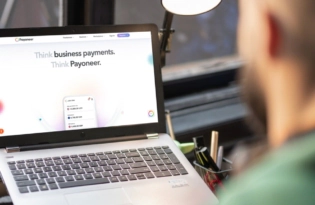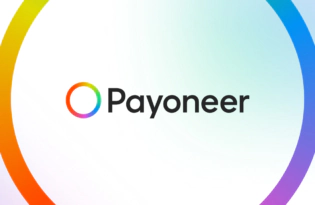How to prevent online payment fraud as an SMB
Prevent online payment fraud by overcoming challenges like phishing, fake accounts, and account takeovers (ATO) with enhanced security features from Payoneer.

As a small or medium-sized business that operates online, you’ve probably heard that payment fraud is on the rise. According to Juniper Research, merchant losses from online payment fraud will exceed $362 billion worldwide by 2028 – with losses of $91 billion alone in 2028.
Whereas online payment fraud was once synonymous with stolen credit cards, today, businesses are facing new, more sophisticated threats. Generative AI in particular, is facilitating more advanced phishing and business email compromise (BEC) strategies.
Consequently, detecting fraudulent activity is harder than ever, and SMBs across any industry can be targeted.
At Payoneer, our audited payment platform is recognised by financial regulators all over the world, so we know a thing or two about the essentials of online payment security and fraud prevention.
Types of online payment fraud
To prevent payment fraud, we first need to know what it looks like…
Phishing – Where fraudulent actors send emails, text messages, or create websites to trick businesses into disclosing sensitive information.
Identity theft – Involves obtaining someone’s personal information like their name and bank details to make unauthorised purchases, or to open accounts in their name.
Chargeback fraud – When someone makes a purchase and then claims that they didn’t receive the product that they paid for. They then receive a refund while keeping the product.
Business email compromise – when an email tricks an employee into transferring money to fraudulent accounts.
Using customer authentication to prevent fake accounts
Fake merchant accounts rely on employees unknowingly giving away confidential information. For example, earlier this year, a finance worker at a multinational firm was tricked into paying out $25 million to a fake account using deepfake technology.
To prevent fraudsters from getting their hands on personal details, you should make sure that the payee and the recipient of an online transaction are authenticated.
Payment authentication uses features like account passwords, biometrics, and passcodes to verify that an online transaction is legitimate. It validates that the person making the transaction is who they say they are.
Since September 2019, Strong Customer Authentication (SCA) has been mandatory in Europe as part of the EU’s Payment Services Directive 2 (PSD2) legislation. However, according to research from Barclays, 28% of merchants still aren’t fully compliant, despite 73% of retailers in the UK reporting a drop in online payment fraud since adhering.
At Payoneer, we verify all our business applicants by collecting proof of identity, evidence of income, and line of business to prevent fraudsters from joining your merchant platform.
Blocking multi-accounting offenders
Multi-accounting is when fraudsters create multiple accounts with the same provider to game a system, exploiting loopholes and gaining unfair advantages.
Some strategies you can employ as an SMB to prevent multi-accounting include:
Advanced user verification – A two-factor authentication (2FA) process that requires verification through a phone number, text message, or email.
IP and device fingerprinting – Analysing a user’s network location, browser type, and operating system to identify multiple accounts from the same device or IP address.
Email analysis – Checking the validity of an email address to ensure it isn’t temporary, or from an unknown domain.
AI-driven algorithms: Using machine learning and artificial intelligence to identify suspicious behaviour and patterns on user accounts.
According to Payoneer’s historical data, 67% of the fraud cases we reviewed in 2018 were part of a larger group incident. Indeed, if SMBs were to work more closely with a payment partner like Payoneer, an estimated 57% of fraud cases could be averted.
Whenever we close an account for fraud, our rules automatically prevent the opening of related fraudulent accounts.
Monitoring suspicious activity to avoid account takeovers
According to Sift, in 2023 alone, account takeover fraud (ATO) resulted in nearly $13 billion in losses – up from $11 billion in 2022.
ATO fraud is when a fraudster takes over someone else’s bank, email, or social media account without permission. The victim’s login information is typically accessed through malware or a phishing attack.
Although identifying an ATO can be tricky, there are preventative measures you can take:
- Set login limits – Restrict the number of login attempts allowed by username, device, and IP address.
- Enforce strong passwords – Only allow passwords that are unique, and use secure services like LastPass or Bitwarden.
- Use multifactor authentication – At login, have codes sent to mobile devices in addition to passwords for an extra layer of security.
- Use CAPTCHA – Prevent automated programmes from attempting to log in to existing accounts, and from registering fake accounts.
At Payoneer, we have extensive experience detecting and mitigating account takeovers. Our due diligence, proprietary rules, and detection models ensure that ATOs are lower than the industry average on our platform.
Expanding your security capabilities
As online payment fraud becomes more sophisticated, companies need to stay on top of the latest security features. That’s why many SMBs are partnering with a secure payment processor like Payoneer to handle security and ensure compliance. We can help you comply with anti-money laundering (AML) laws like the MLD4 (Fourth EU Anti-Money Laundering Directive).
A recent innovation in online payment security is delegated authentication, where a third-party handles the authentication process. This allows SMBs to provide more secure payment experiences without compromising on conversion rates.
Likewise, 3D Secure (3DS) provides an extra layer of verification when processing payments. The security measure (which is mandatory in some countries), redirects suspicious transactions to a 3DS page for additional verification. The payment provider then asks the card holder to enter a secure PIN before the purchase goes through.
Tokenization is also an emerging security feature that allows you to replace sensitive payment data with a random string of characters, known as a token. The token acts as a reference to the original data, but has no value or significance outside of the transaction. It helps prevent online fraud by protecting account information, reducing the number of false declines, and streamlining account management.
Reduce marketplace risk and fraud
At Payoneer, we protect your marketplace from risk and fraud with our world-class compliance platform. Our global experts offer full visibility into financial activities, helping to mitigate approximately 70% of marketplace fraud.
With Payoneer, you have fraud experts on hand. Our team are always looking out for your marketplace, and helping you reduce fraud costs – while ensuring you’re 100% compliant.
Related resources
Latest articles
-
Planning to hire employees in France? Here’s a quick guide
Looking to hire employees in France for your U.S. company? Learn about employment in France and how Payoneer Workforce Management makes it simple to hire in France.
-
Planning to hire employees in Spain? Here’s a quick guide
Are you looking to hire employees in Spain? Learn about employment in Spain and how Payoneer Workforce Management can help American companies hiring in Spain.
-
How to hire employees in the Netherlands
Looking to hire employees in the Netherlands for your U.S. company? Learn about employment in the Netherlands and how Payoneer Workforce Management can help hire in the Netherlands.
-
How to hire employees in Australia
Looking to hire employees in Australia for your US company? Learn about employment in Australia and how Payoneer Workforce Management makes it easy to hire in Australia.
-
Planning to hire employees in Germany? Here’s a quick guide
Are you looking to hire employees in Germany? Learn about hiring in Germany and how Payoneer Workforce Management can help U.S. companies hiring in Germany.
-
Planning to hire employees in the Philippines? Here’s a quick guide
Wondering how an American company hires employees in the Philippines? Our guide covers how to hire employees in the Philippines and how we can help.
Disclaimer
Nothing herein should be construed as if Payoneer Inc. or its affiliates are soliciting or inviting any person outside the jurisdiction where it operates/is licensed to engage in payment services provided by Payoneer Inc. or its affiliates, unless permitted by applicable laws. Any products/services availability are subject to customer’s eligibility. Not all products/services are available in all jurisdictions in the same manner. Depending on your eligibility, you may be offered with the Corporate Purchasing Mastercard, issued by First Century Bank, N.A., under a license by Mastercard® and provided to you by Payoneer Inc., or the Payoneer Business Premium Debit Mastercard®, issued and provided from Ireland by Payoneer Europe Limited under a license by Mastercard. The Payoneer Business Premium Debit Mastercard® cannot be used at merchants or ATMs in Hong Kong or for HKD payments. If you are located in the EEA, all Payoneer Services will be provided to you by Payoneer Europe Limited, trading as Payoneer and regulated by the Central Bank of Ireland.
The information in this document is intended to be of a general nature and does not constitute legal advice. While we have endeavored to ensure that the information is up to date and correct, we make no representations or warranties of any kind, express or implied, about the completeness, accuracy, reliability or suitability of the information. In no event will we be liable for any loss or damage including without limitation, indirect or consequential loss or damage, or any loss or damage whatsoever incurred in connection with the information provided.














